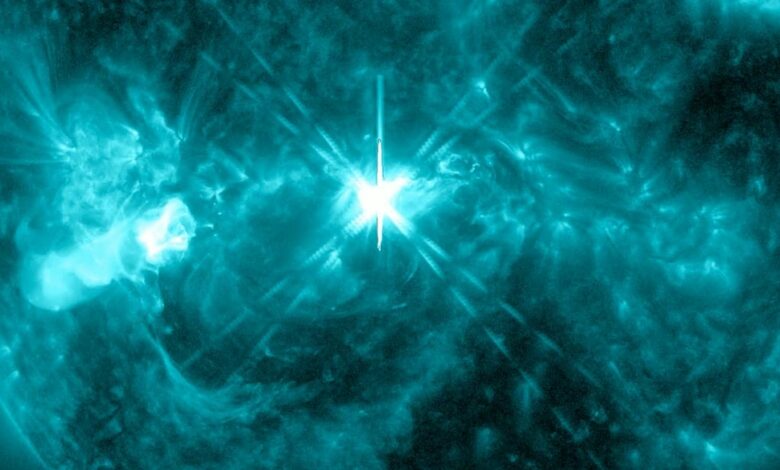Massive X2.3 solar flare causes radio disruptions in the Southern Hemisphere

A powerful solar flare of class This marks the strongest eruption produced by this sunspot region to date. The eruption, one of the most intense solar events, was accompanied by high levels of ultraviolet radiation, leading to shortwave radio blackouts in areas of the Southern Hemisphere. These radio disruptions were most noticeable in parts of South America and Africa.
Potential for impact by coronal mass ejection
Scientists are awaiting data from the Solar and Heliospheric Observatory (SOHO), a joint spacecraft of NASA and the European Space Agency, to assess whether a coronal mass ejection (CME) will impact Earth. CMEs are large bursts of plasma and magnetic fields from the Sun’s corona that, when directed toward Earth, can lead to geomagnetic storms. These storms can cause aurora, such as the Northern Lights, but also disrupt satellite communications and electricity grids.
Solar flares are classified on a four-level scale, with class X solar flares being the most powerful. The X2.3 flare is classified as a ‘strong’ event, according to at the National Oceanic and Atmospheric Administration (NOAA) Space Weather Prediction Center (SWPC). This outburst caused a radio blackout at R3 level (strong) on the space weather scale, affecting high-frequency radio signals across the Atlantic Ocean.
Continued solar activity expected
The SWPC has indicated that further solar flare activity is likely, with an increased chance of R1-R2 (small to moderate) flares. There remains the possibility that even stronger events, similar to the X2.3 flare, will occur in the coming days while the Sun is still in its maximum solar phase. This phase, part of Solar Cycle 25, is expected to cause an increase in solar activity in 2024 and 2025.




